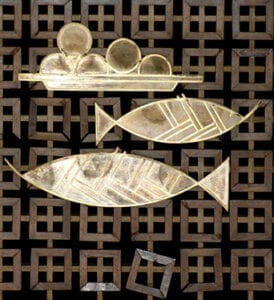 In these days of pandemic, when we are not able to receive the Eucharist, we have the words of Elizabeth Seton to remind us of another powerful way we can be in union with Jesus.
In these days of pandemic, when we are not able to receive the Eucharist, we have the words of Elizabeth Seton to remind us of another powerful way we can be in union with Jesus.
Elizabeth’s reflection begins with her understanding of the importance of the Holy Eucharist to our faith life. It is the Catholic understanding of the real presence of Jesus in the Eucharist that brought her to embrace the faith in the first place. Yet, she says, we can also receive him in another way, in the Communion of his Cross. By this she means that when Jesus invites us to come and receive him in our affliction and suffering, we can receive him with the same ardor as when we receive him in Holy Communion.
The great advantage of the Communion of the Cross, she says, is that we receive it when Our Lord pleases, and at the time he sees best. Here she is reminding us of the practice in her day of being allowed to receive the Eucharist only when the spiritual director or confessor gave permission to do so; it would not in most cases be a daily occurrence.
In any case, receiving the Eucharist would happen at the celebration of the liturgy. She notes that the sacrifice of the altar is celebrated only at certain hours, but the sacrifice of the cross accomplishes itself at all times — in our sufferings. She says that we need not go to church to make this communion of suffering, for Jesus comes to find us wherever we are.
In Elizabeth’s words, “When our Savior offers us his cross in any way it is himself, it is his own blood he offers.” She urges us then to receive our afflictions with the same peace and repose we bring with us to the altar at the time of communion.
During these days when we are deprived of Holy Communion let us remember this reflection of Elizabeth’s, and unite our pain and deprivation to that of our crucified Savior.
– Sr. Mary E. Mc Cormick
(based on Elizabeth Bayley Seton Collected Writings, vol. 3a, pp. 419 and following)
Image: Vanderbilt University Unit Collection, Art in the Christian Tradition
